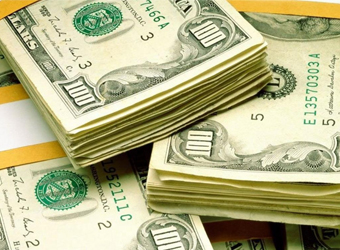The dollar wobbled in Asian trading on Monday as some lackluster U.S. data and comments from Federal Reserve officials gave investors few catalysts to build on their U.S. currency exposure.
The dollar index, which tracks the U.S. currency against a basket of six major rivals, edged up slightly to 100.400. It notched a low of 98.858 last week, its weakest level since November 11, in the wake of U.S. President Donald Trump’s failure to get a healthcare reform bill passed last month.
“The dollar got some support last week from month-end buying and came off its lows, but overall its heaviness remains unchanged,” said Mitsuo Imaizumi, Tokyo-based chief foreign-exchange strategist for Daiwa Securities.
“This week, investors are waiting for Friday’s non-farm payrolls report, and a worse-than-expected reading would push the dollar down more than a better-than-expected reading would push it up,” he said, underscoring the already cautious expectations on the pace of further U.S. rate hikes this year.
Economists polled by Reuters predict the U.S. economy will have added 180,000 jobs in March.
The Bank of Japan’s “tankan” survey released on Monday showed that large Japanese manufacturers expected the dollar to average 108.43 in the financial year that began this month.
The dollar stood at 111.34 yen on Monday, nearly flat on the day and below Friday’s ten-day peak of 112.19 yen.
The tankan also showed that big manufacturers’ business sentiment improved for a second straight quarter to hit a 1-1/2-year high in March, a sign the benefits of an export-driven economic recovery were broadening.
“The numbers are better” than previous surveys, said Harumi Taguchi, principal economist at IHS Markit in Tokyo, adding “if the yen’s current weakness is continued, that would be better for their profit and that will support fixed investment, which is good for the economy.”
“But we need to see if any of the Trump administration’s plans make it harder for their initial plans to succeed,” she added.
On Friday, Trump ordered a study into the causes of U.S. trade deficits and a clampdown on countries that evaded import duties.
Investors also parsed comments from Fed officials on Friday, some of which pressured the greenback.
Markets are currently pricing in more than a 50 percent chance that the central bank will hike interest rates at its June meeting, the second of the three increases expected this calendar year.
New York Fed President William Dudley, seen as one of the most important members of the Fed’s policy-setting committee, said the central bank could begin trimming its bond portfolio this year- earlier than many economists expect- but also said that it was in no rush to tighten monetary policy.
St. Louis Fed President James Bullard and Minneapolis Fed President Neel Kashkari also said on Friday they expect rate increases this year, but both were cautious about the U.S. economy.
A spate of mixed U.S. economic data on Friday reinforced the Fed’s view that the economy is growing at a steady but not rapid pace. Consumer spending barely rose in February amid delays in the payment of income tax refunds, but inflation marked its biggest annual increase in nearly five years.
The consumer spending data led some of Wall Street’s top banks to mark down their first quarter growth estimates for the U.S. economy.
Speculators reduced bullish bets on the U.S. dollar for the first time in four weeks in the week ended March 28, according to Commodity Futures Trading Commission data released on Friday and calculations by Reuters.
The euro added 0.2 percent to $1.0685 but remained not far above Friday’s low of $1.0649, its weakest since March 15.
The single currency came under pressure last week after data showed euro zone inflation slowing.
European Central Bank officials also signaled that the central bank is still very much in easing mode, after their policy message in April prompted investors to price in an interest rate hike early next year.
Source: Reuters



